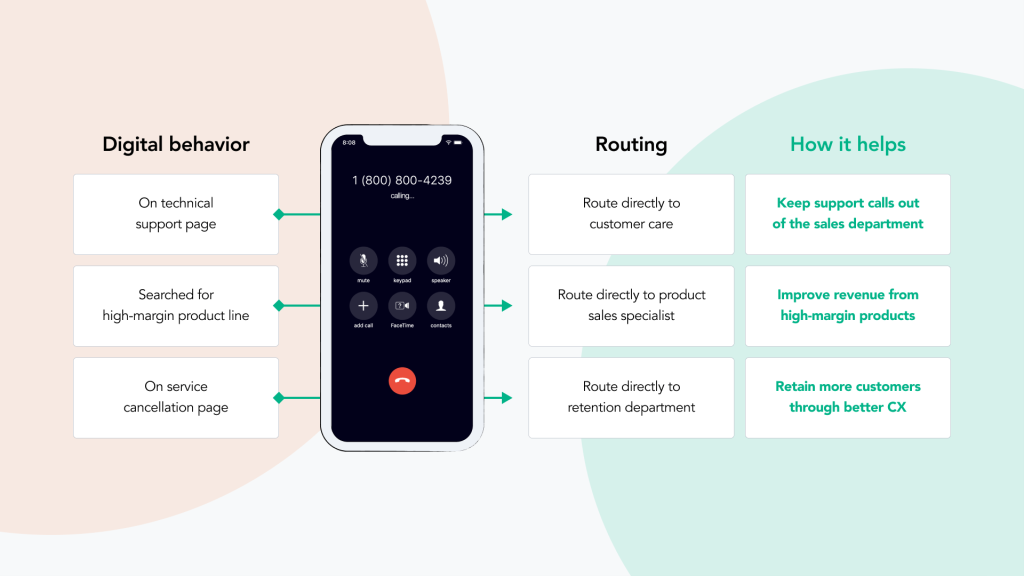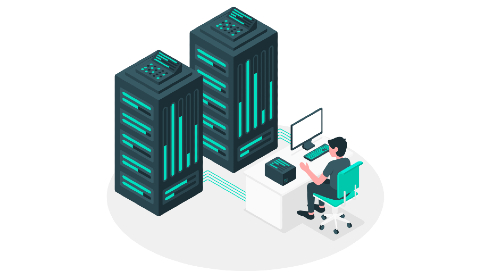Unleashing the Potential of Call Data: The Impact on E-Commerce Business Success
Customer acquisition and retention are critical yet challenging aspects of running an e-commerce business. Studies show that 80% of customers will do business with a competitor after two bad experiences. Moreover, 78% of consumers have backed out of a purchase due to a poor customer experience. Such alarming statistics indicate that online retailers must gain deeper insight into the customer journey. However, many e-commerce businesses fail to tap into one of their most valuable sources of customer insights – phone call data. The phone call data provides insights into the caller’s details, including intent, interest, and pain points. Businesses can use the information to improve customer service, personalize interactions, and enhance offerings.
But how? How can you use it to boost your sales and foster customer loyalty? Let’s understand!
Understanding Call Data in eCommerce
Call data in eCommerce can be categorized into customer inquiries, purchase-related questions, and feedback calls. Each type of call data gives insights into different aspects of the eCommerce business. Let’s understand them in detail.
1. Customer Inquiries
eCommerce companies that provide toll-free numbers see a significant volume of inquiry calls. Customers may contact support with questions regarding sizing, materials, care instructions, personalized options, shipping timelines, inventory availability, compatibility, functionality, or other product-related concerns. By tracking the frequency of inquiries by category, businesses gain visibility into areas of confusion. For example, a high volume of sizing questions would indicate the need for expanded size charts.
Inquiries also provide early warning signs regarding website glitches. If multiple customers report error messages during payment, your tech team can investigate and resolve the issue promptly. Proactively improving self-service resources to address common questions reduces customer effort and accelerates purchase decisions.
2. Purchase-related Calls
Customers often reach out regarding inquiries about their order status, billing discrepancies, payment failures, and general troubleshooting related to purchases. By diligently monitoring and categorizing these calls over time, eCommerce companies amass invaluable data on the hurdles customers encounter during the purchase process. Pinpointing these pain points enables systematic improvements, such as policy updates, implementation of confirmation emails, or optimization of the checkout flow.
3. Customer Feedback
Inbound calls also provide an open channel for customers to share feedback about their experiences. Positive and negative feedback offers qualitative insights that help eCommerce brands continually improve. For instance, consistent complaints about unclear return policies would indicate the need for rewriting.
On the other hand, glowing reviews of excellent customer service from callers enable companies to recognize and reward high-performing team members. By regularly analyzing feedback themes from calls, businesses can address the root causes behind churn and double down on the key drivers of loyalty and satisfaction.
Capturing and Storing Call Data
Most cloud-based call center solutions offer call recording and transcription services. They even integrate with CRM platforms, allowing you to correlate the data with individuals and make informed decisions. Let’s understand the benefits of call recording, transcription, and data management systems.
1. Call Recording
Call recording provides the raw data source for understanding customer conversations. By recording interactions, businesses preserve a searchable library of real customer feedback. Managers can audit samples for training needs, ensure policy consistency, and monitor service quality.
Automated call analysis takes this several steps further by tracking key metrics like resolution times, escalations, sentiment, churn indicators, and more. This exposure to genuine interactions shapes better training while uncovering opportunities to improve policies, processes, and customer experience.
2. Call Transcription
AI-powered speech analytics accurately transcribes calls into text transcripts. This facilitates rapid analysis by conversation topic, keyword searches across data sets, and emerging trend identification. Metadata tags automatically categorize calls by resolution status, escalation, sentiment, etc.
3. Data Management Systems
On their own, call recordings and transcripts simply create information overload. To optimize value, data management systems like CRM consolidate this rich call data and integrate it with customer profiles, outcomes, and longitudinal journey analytics.
Linking call insights to associated customer attributes facilitates real-time applications — like intelligent screen pops for agents — and historic analysis revealing behavioral trends and opportunities to improve retention, loyalty, and lifetime value.
How Do You Use Call Data to Improve Customer Experience?
Now that we know the benefits of call data for your eCommerce business let’s understand how you can use it to enhance customer experience and foster customer loyalty.
1. Offer Personalized Support
Agents that have contextual information can better demonstrate an understanding of individual needs. They can provide tailored recommendations and proactively guide customers based on their preferences. Integrate call history into CRM profiles to arm agents with 360-degree customer views in real-time.

2. Identify Customer Pain Points
Analyze call data to pinpoint complaint patterns related to website navigation, product availability, or checkout. A conversation intelligence solution can identify when a customer calls rather than shops online. It also highlights the caller’s journey through your website so agents know what brought them to you. For instance, understanding why customers are calling instead of using the website could prompt improvements in online self-service options or clarify confusing aspects of your website.
3. Proactively Engage Customers
Use call data to identify at-risk customers based on frequent returns or complaints. Proactively retain them through personalized promotions or tailored solutions. Connect with high lifetime value customers exhibiting suddenly decreased calls via proactive surveys or incentives aimed at re-engagement.
You can strengthen relationships and loyalty by proactively engaging customers with call data insights. Personalized outreach to at-risk customers shows you care about their experience while incentivizing disengaged VIPs, which prevents losing their business in the long run. The end goal is nurturing relationships across the customer lifecycle, not just during support interactions.
4. Enhance Products Based on Feedback
Gather insights from customer calls to identify recurring feedback regarding service aspects like delivery, returns, or support. Use this information to improve services in ways that better meet customer preferences. For example, if customers are dissatisfied with return processing time, optimize policies and procedures to address these concerns. This empowers you to align operations with your customers’ evolving needs, driving higher satisfaction and loyalty.
5. Optimize Agent Performance
Analyze call data to evaluate agent performance key metrics such as call resolution time, FCR, CSR, and adherence to company policies and procedures. Identify areas for improvement or additional training based on performance trends and customer feedback. Implement targeted coaching sessions or professional development opportunities to empower agents with the skills and knowledge needed to deliver exceptional customer service consistently.
How to Use Call Data to Boost Sales?
With Call data analytics, you can better understand your customers, tailor product recommendations, proactively engage them, and identify upsell opportunities. Here’s how.
1. Analyze Buyer Behavior
By analyzing call data transcripts, you gain valuable insights into detailed buyer patterns, including frequently asked questions, most popular products, seasonal purchase trends, and the key factors driving customers’ purchase decisions.
This rich data empowers you to:
- Adjust Sales Strategies: Use insights from call data to identify opportunities to fine-tune your sales tactics, scripts, and campaigns to better resonate with customers and boost conversion rates.
- Optimize Product Offerings: Call data may show if there’s a rising interest in any product. Tailor and expand your promotional strategies based on those purchase motivators to enhance engagement and drive more sales.
2. Personalize Product Recommendations
Delivering personalized shopping experiences tailored to individual customer preferences is paramount for success in today’s market, with 77% of customers demanding more customized engagements.
By holistically analyzing call data in conjunction with past purchase history, browsing behavior, and other analytics, you can craft product recommendations uniquely suited to resonate with each customer.

Here’s how:
- Segmentation Analysis: Thoroughly analyze call data to divide customers into segments based on product/category affinities, purchase history, browsing behaviors, motivating factors, and more.
- Predictive Modeling: Build and apply predictive models to help anticipate individual customer needs and preferences.
- Dynamic Content Generation: Use customer call data and web analytics to generate personalized content, recommendations, incentives dynamically, and offers in real time.
3. Optimize Pricing Strategy
As discussed above, call data provides insights into customer preferences, price sensitivity, and broader market trends. Use this to make informed decisions regarding when to change pricing strategies. Here’s how to make the most of it.
- Regional Price Testing: Analyze regional call data to experiment with localized pricing differences and evaluate customer elasticity across geographic segments.
- High-Value Customer Insights: Identify your highest-value customers through call analysis and solicit direct structured feedback on optimal pricing models through VIP councils or surveys.
- Dynamic Bundling Discounts: Utilize call insights to offer customized bundle discounts in real-time that entice customers to spend more and purchase higher-margin items.
4. Run Targeted Ads
By leveraging call data in your advertising efforts, you optimize your targeting and messaging and foster deeper connections with your audience. Here’s how to use insights gathered from call data to improve ROAS.
- Micro-Targeting: Create hyper-targeted customer clusters based on granular call data analysis to run tailored ads optimized for niche segments where your products resonate strongest.
- Contextual Targeting: Identify contextual clues like keywords, questions, and emotional language from calls that can inform ad targeting parameters and alignment with intent and mindset.
- Negative Keyword Identification: Pinpoint call excerpts demonstrating customer irritation at irrelevant or overly promotional messaging to add as negative keywords.
5. Identify Upsell and Cross-sell Opportunities
Recognizing opportunities for upselling and cross-selling is essential for maximizing revenue and fostering loyalty. In fact, eCommerce businesses that use cross-selling techniques have a 60-70% repeat purchase rate as opposed to just 10% for those that do not use cross-selling.

Here’s how to use call data to identify upsell and cross-sell opportunities.
- Need Analysis: Thoroughly analyze call data to identify specific mentioned or implied customer needs that current purchases don’t fully satisfy. Target relevant upsells or accessories that fulfill those needs.
- Value Mapping: Gauge customer perceptions of product value and quality expectations through call analysis. Upsell to higher-tier products when value perceptions exceed price sensitivity.
- Event Triggers: Identify significant life events like marriage or a new baby through call conversations that signal opportunities for thoughtful, personalized cross-sells.
Conclusion
When used efficiently, call data gives an in-depth understanding of your customers. You’ll uncover trends in their behavior, identify areas of improvement, and find what keeps them coming back. Using these insights to fuel your customer support and marketing strategies can enhance experience and boost sales.



Leave a Reply